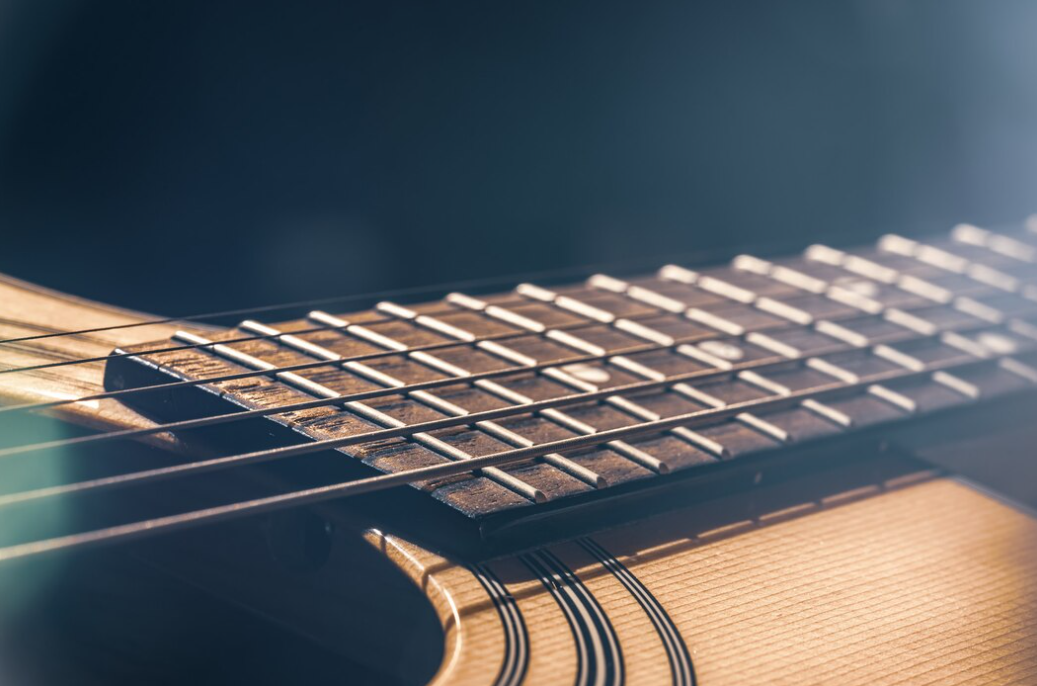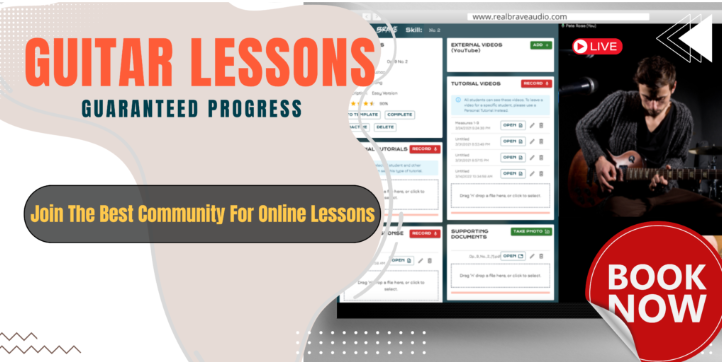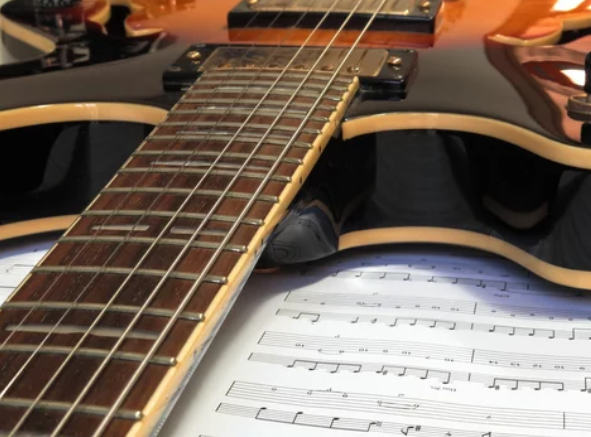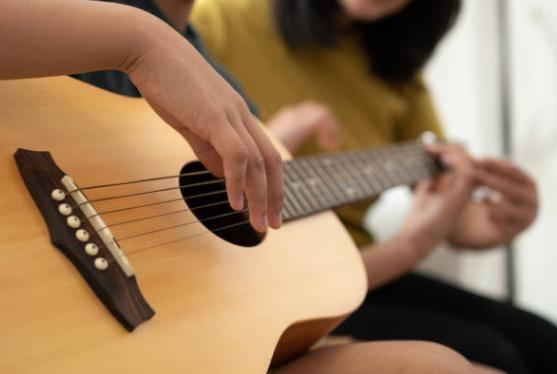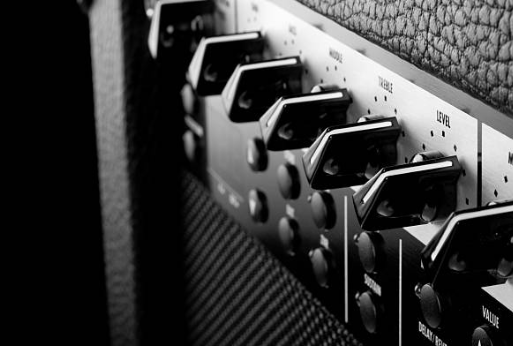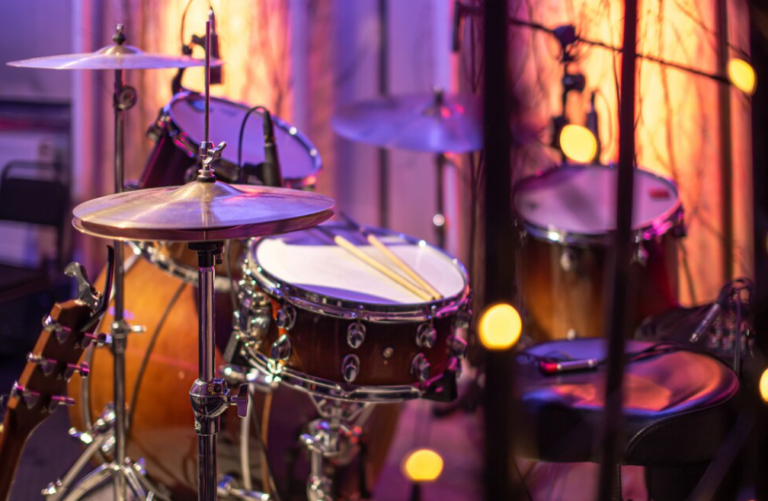Introducting How To Play The A Flat Major Scale
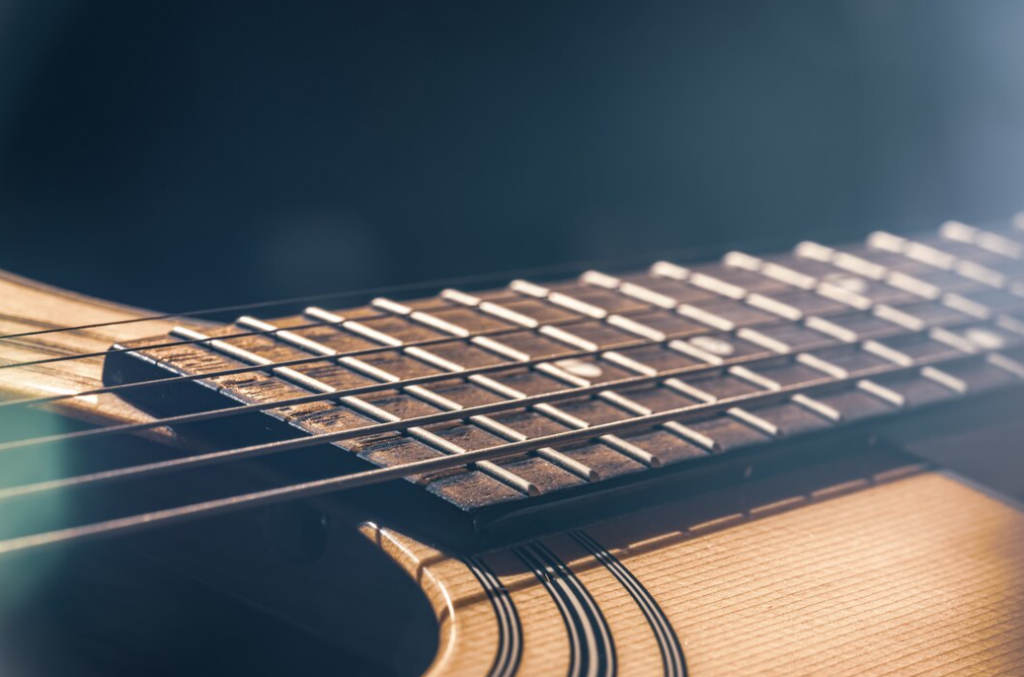
Learning to play the A-flat major scale is crucial for musicians as it provides a foundational understanding of keys in music, enhances transposition abilities, facilitates recognition of common chord progressions, aids in ear training, improves technical proficiency, and ensures versatility across different musical genres. Mastering this scale not only develops fundamental skills such as finger dexterity and coordination but also expands the repertoire of songs a musician can play and enables them to adapt to various musical contexts with ease.
In this blog, we’ll talk about the notes, formula, structure, and positions of the A Flat Major scale on guitar.
Scale Composition
A Flat Major Scale Notes
The A-flat major scale contains 4 flats and 3 natural notes within its sequence:
A♭ – B♭ – C – D♭ – E♭ – F – G
Scale Formula
It has the standard formula:
Root – Major 2nd – Major 3rd – Perfect 4th – Perfect 5th – Major 6th – Major 7th
Scale Structure
The A-flat major scale adheres to the major scale pattern composed of alternating whole and half steps:
Whole – Whole – Half – Whole – Whole – Whole – Half
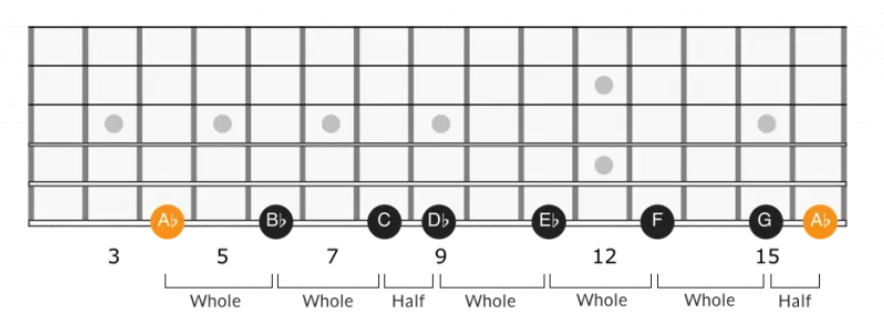
Scale Positions
The illustrations provided below demonstrate the 5 CAGED positions for playing the A-flat Major scale on the guitar.
Position 4 (E Shape)

- Start: 4th fret of the 6th string (A-flat)
- Pattern: Index (1) on 4th fret, Ring (3) on 6th fret, Pinky (4) on 7th fret for the 6th and 5th strings; same finger pattern for the 4th and 3rd strings; Index (1) on 3rd fret, Middle (2) on 4th fret, Pinky (4) on 6th fret for the 2nd and 1st strings.
Position 6 (D Shape)

- Start: 6th fret of the 5th string (A-flat)
- Pattern: Index (1) on 6th fret, Middle (2) on 8th fret, Pinky (4) on 9th fret for the 5th string; Index (1) on 6th fret, Ring (3) on 8th fret, Pinky (4) on 9th fret for the 4th and 3rd strings; Index (1) on 6th fret, Middle (2) on 8th fret for the 2nd and 1st strings.
Position 8 (C Shape)

- Start: 8th fret of the 6th string (A-flat)
- Pattern: Index (1) on 8th fret, Middle (2) on 9th fret, Pinky (4) on 11th fret for the 6th string; Index (1) on 8th fret, Ring (3) on 10th fret, Pinky (4) on 11th fret for the 5th string; Middle (2) on 9th fret, Pinky (4) on 11th fret for the 4th and 3rd strings; Index (1) on 8th fret, Middle (2) on 9th fret for the 2nd string; Index (1) on 8th fret, Pinky (4) on 11th fret for the 1st string.
Position 11 (A Shape)
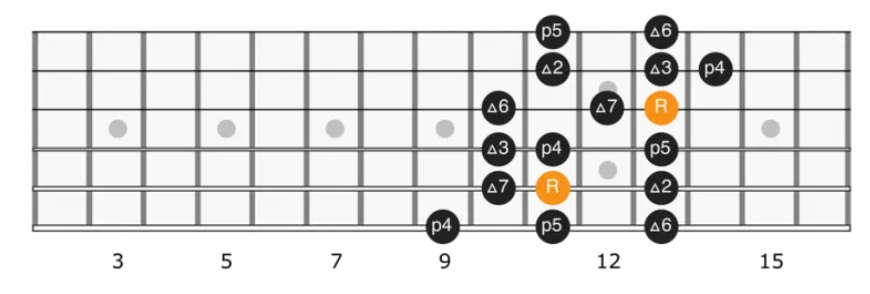
- Start: 11th fret of the 5th string (A-flat)
- Pattern: Index (1) on 11th fret, Ring (3) on 13th fret, Pinky (4) on 14th fret for the 5th string; same finger pattern for the 4th and 3rd strings; Index (1) on 11th fret, Middle (2) on 12th fret, Pinky (4) on 14th fret for the 2nd and 1st strings.
Position 13 (G Shape)

- Start: 13th fret of the 6th string (A-flat)
- Pattern: Index (1) on 13th fret, Middle (2) on the 14th fret, Pinky (4) on 16th fret for the 6th string; Index (1) on 13th fret, Ring (3) on 15th fret, Pinky (4) on 16th fret for the 5th and 4th strings; Index (1) on 13th fret, Middle (2) on 14th fret for the 3rd string; Index (1) on 13th fret, Pinky (4) on 16th fret for the 2nd and 1st strings.
Tips for Practice:
- Memorize each position: Start by learning each position individually, paying close attention to the root notes (A-flat).
- Connect positions: Practice shifting between positions to understand how they connect along the fretboard.
- Use a metronome: Start slowly to ensure accuracy, then gradually increase the tempo.
- Practice in different keys: Once comfortable in A-flat, try moving these patterns to other keys to improve your fretboard knowledge.
- Improvise: Use the scale positions to create melodies and improvise over backing tracks to apply what you’ve learned musically.
Remember, the key to mastering scales in all positions is consistent, focused practice.
Interested in taking your guitar skills to the next level? Click the below and book a free lesson with us! We’re committed to helping you express yourself freely on the guitar without endless scales and theory. Happy playing!
Author: Daniel Powers Jr, the founder of Real Brave™, serves as the chief inspiration to thousands of students in the Real Brave music instruction program. He’s also the visionary behind PracticePad™, an online platform for live one-on-one online music lessons, lesson tracking, and scheduling. Beyond his entrepreneurial pursuits, Daniel leads a non-profit organization that provides formerly homeless children with access to music education, making a profound impact on their lives. His unwavering dedication to music, innovation, and education continues to inspire individuals to reach their fullest potential while creating positive change in communities. Follow Real Brave on all the socials:
youtube.com/@realbraveinc
twitter.com/realbraveinc
https://www.tiktok.com/@realbraveinc
instagram.com/realbraveaudio
facebook.com/realbraveinc
